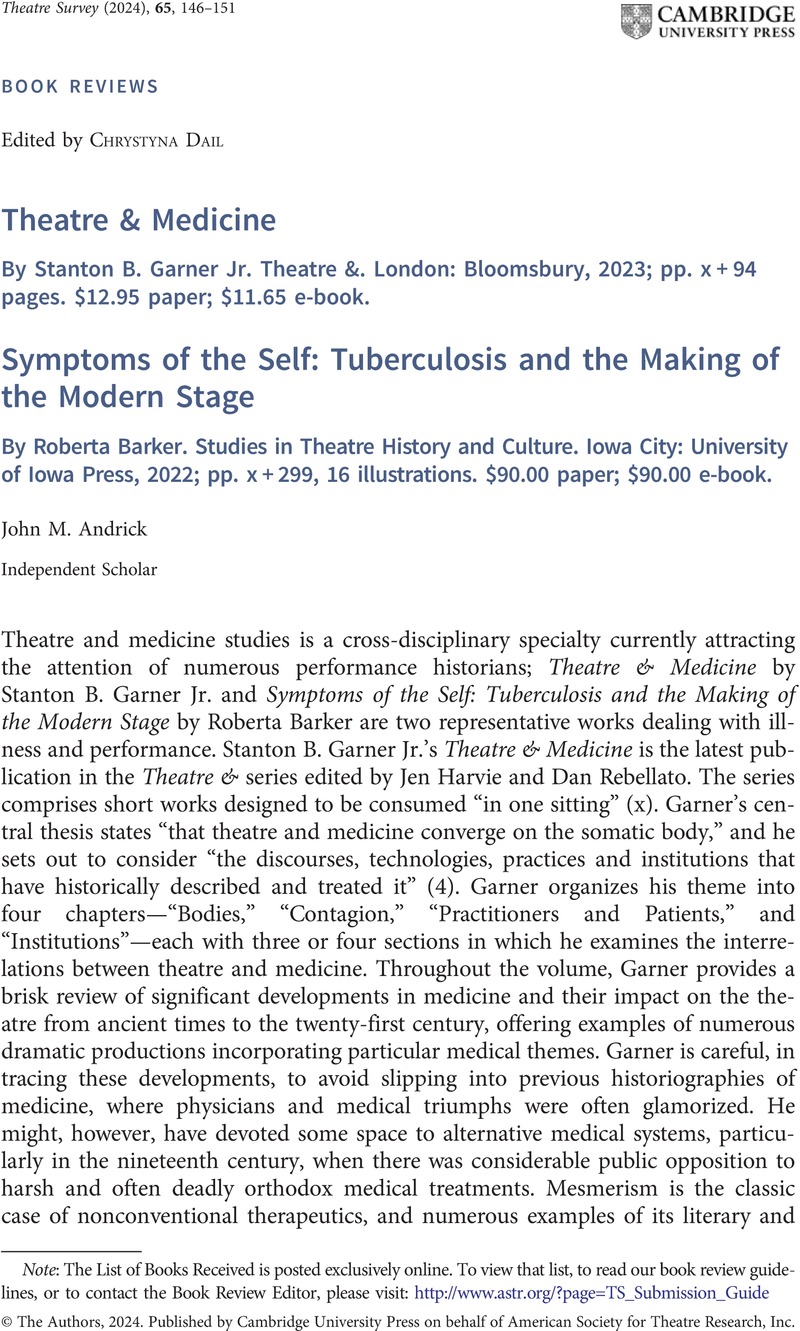No CrossRef data available.
Theatre & Medicine By Stanton B. Garner Jr. Theatre &. London: Bloomsbury, 2023; pp. x + 94 pages. $12.95 paper; $11.65 e-book. - Symptoms of the Self: Tuberculosis and the Making of the Modern Stage By Roberta Barker. Studies in Theatre History and Culture. Iowa City: University of Iowa Press, 2022; pp. x + 299, 16 illustrations. $90.00 paper; $90.00 e-book.
Review products
Theatre & Medicine By Stanton B. Garner Jr. Theatre &. London: Bloomsbury, 2023; pp. x + 94 pages. $12.95 paper; $11.65 e-book.
Symptoms of the Self: Tuberculosis and the Making of the Modern Stage By Roberta Barker. Studies in Theatre History and Culture. Iowa City: University of Iowa Press, 2022; pp. x + 299, 16 illustrations. $90.00 paper; $90.00 e-book.
Published online by Cambridge University Press: 30 May 2024
Abstract
An abstract is not available for this content so a preview has been provided. Please use the Get access link above for information on how to access this content.

- Type
- Book Reviews: Edited by Chrystyna Dail
- Information
- Copyright
- Copyright © The Authors, 2024. Published by Cambridge University Press on behalf of American Society for Theatre Research, Inc.
Footnotes
Note: The List of Books Received is posted exclusively online. To view that list, to read our book review guidelines, or to contact the Book Review Editor, please visit: http://www.astr.org/?page=TS_Submission_Guide


